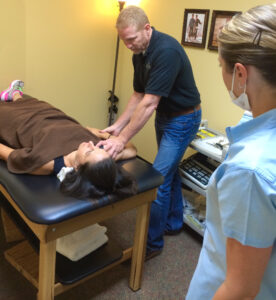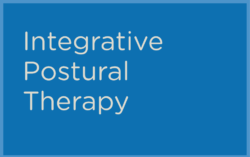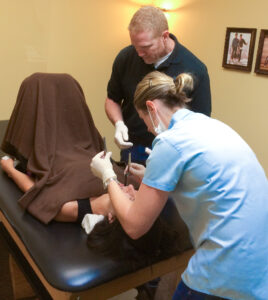
Posture Affects Bite Affects Posture
If we sprain an ankle, we will shift our weight to the other leg; we will do a similar thing in the mouth or with the jaw to avoid pain or create chewing efficiency. The longer an injury has been compensated for, the more engrained a body pattern becomes over time. Whether a person developed a crooked bite because of a neck strain or developed a crooked neck because of a cranial strain (often from birth), it can be very complicated to solve the dysfunction and/or posture that is reflective of both parts. Integrative Postural Therapy is the collaborative combined efforts by dentist and physical therapist to understand and treat this otherwise mysterious relationship.
Causes of poor body posture
The body’s natural asymmetry of the internal organs sets all of us up to compensate as we attempt bilaterally symmetrical activities like walking. Though the root cause is the same, how each of us adapts varies: some slouch forward, others become hyper-erect, and yet others tend to favor one side over the other. These different physical states are not the problem — the problem is when a person can’t get out of that pattern and thus becomes “locked.” As a person lives in a locked body position, many of the references needed for healthy function are lost.
How Integrative Postural Therapy helps
Depending on how a patient’s symptoms initially appear, a patient may first seek care with Mike Cantrell MPT or Kristen Spencer DPT for physical therapy to gain postural education. Mike and Kristen specialize in the body whole – and are able to help patients see how the parts of themselves are connected. For many people, use of stability shoes or custom foot orthotics are needed to help them find certain muscles. For some, a strong visual component exists and requires special lenses for correction. For others, removing the influence of a patient’s teeth by using a tongue depressor between the teeth is enough to impact the whole system into more fluidity at the joint level and higher performance at the functional level.
In that case, the patient will be referred to our practice for Integrative Postural Therapy. The patient is fitted with a custom dental orthotic (lower bite splint), building in specific biting patterns to help the patient to feel how the jaw and neck position can change — simply by feeling the teeth touching the bite splint in that pattern.
Length of Treatment
From initial evaluation to discharge, the therapy can go as quickly as two visits to as long as six months with visits scheduled every couple weeks. Each treatment takes approximately 45 minutes, assessing via objective tests a patient’s ability to demonstrate various functional tests. Through coaching of specifically targeted exercises, a patient is led to feel certain muscles that they have previously not used in their postural support, and over time, these exercises become easier for the patient to master and no longer need to do. When there is a strong dental influence in the postural distress, further dental treatment may be indicated.
Results
Depending on how strong the unhealthy postural pattern is engrained, and to a much greater degree how committed the patient is to the home program prescribed, Integrative Postural Therapy can be absolutely life-changing.



